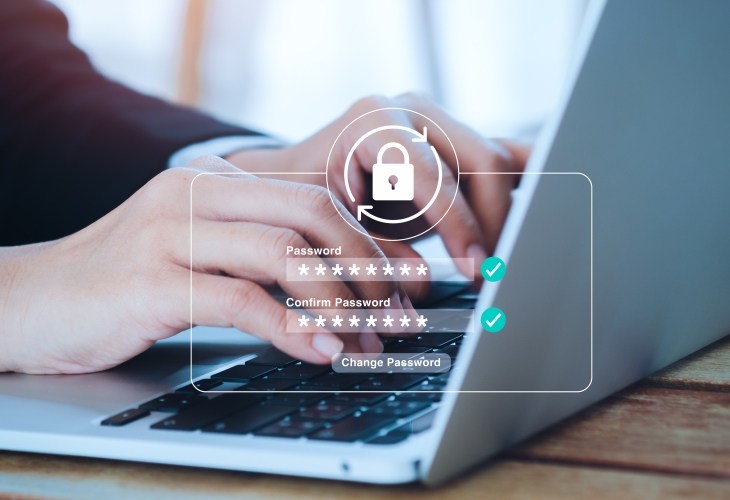In an era where data breaches make headlines and cyber threats loom large, businesses face an unprecedented challenge: How do they safeguard sensitive information while fostering trust in an increasingly digital world? The answer lies at the intersection of compliance and cybersecurity.
Digital transformation has revolutionized how businesses operate, there are significant challenges and opportunities for many businesses to serve their customers. One of the most pressing challenges is ensuring robust cybersecurity while maintaining compliance with ever-evolving regulations. Let us understand why regulations are important and how they can help.
Many cybersecurity events happen across the globe, there is a conscious effort from organizers to ensure that leaders from public and private sectors are present, and there is much need for collaboration. I was lucky to be at Cyber UK (the UK’s Flagship Cybersecurity Event) which was hosted this year in Birmingham by the NCSC- a part of GCHQ. This event which spanned 3 days was attended by many leaders from the public and private sectors and academia. There are many takeaways for me, my key focus is on compliance and cybersecurity which helps build trust in the digital age.
So How Does Cybersecurity Become Personal?
If you look at people, their lives, and livelihoods they are dependent heavily on essential services, imagine spending a day without internet, transport, fuel, electricity, and gas. Any disruption to essential services would affect people personally. In the era of global conflicts and cyber warfare, many governments must protect the country and the people from evolving threats. Many nation or statesponsored actors are using sophisticated technology, techniques, and tactics to cause disruptions to essential services.
When attacks are targeted towards essential services and the general public is impacted at large, it damages the reputation of the entities impacted, as well as the government in a way. It impacts the level of the public’s confidence in the government.
The people of the country want to live their lives as normally as could be, and spend time with their loved ones without worries about the issues that are beyond their control. But when disruptions happen, it impacts their daily routine.
We have seen many evolutions in the digital age, where people are exposed to the internet and consuming services in their daily lives has peaked massively, governments in many countries have identified challenges and plan to focus their attention on addressing these challenges with innovative solutions.
Regulations play a key part where there is a push for organizations to achieve compliance and this will help them reduce their risk levels to a manageable level.
There are three areas where there is a long-term investment:
- Improving the resilience
- Helping close the skill gap
- Collaborating between public and private sectors, including academia
Many industries are dealing with technology debt, and they are vulnerable, a shift to a modern and resilient technology foundation will be seen with the guidance available from the regulators.
We need people who are skilled and can prepare, prevent, respond, and recover from incidents efficiently.

Threat intelligence sharing across borders and sectors is helping to ensure that necessary detection and remediation are planned well ahead of time, you cannot stop the attacks but can prepare better to respond.
Digital trust is crucial for a safe online presence and interactions.Trusted digital identities are a vital building block for the future, they give people a way to prove things about themselves, such as their age, address, or qualifications.
Without the need for physical documents, they make people’s lives easier by enabling smoother, cheaper, and more secure online transactions. Adoption can be a challenge as digital literacy is still a challenge with many who still may not be aware of how to use technology and those who use technology lack trust in its security. In the UK, the Department of Science, Innovation, and Technology (DSIT) is working to build this trust by setting standards in the form of the UK digital identity and attributes trust framework, which includes rules on privacy and data protection, fraud management, cyber and information security, ensuring that products and services are inclusive. The Trust framework will be underpinned by legislation and managed by a governing body to ensure it is kept up to date. There are many ways to strategize, however, I have attempted to highlight a roadmap for building digital trust. Here are some of the aspects that can help build digital trust:
Robust Security Measures Prevention is always better, start with understanding your business, your assets, their values, and the impact of an attack on the assets, implement solutions that help you learn about the attack surface for your organization, and address the threat landscape, visibility is key to protect the assets.
Once you have a visibility address and have security controls to protect emails, the web, endpoints, and network, there are many solutions available that can help you protect the different attack vectors. Remember the tool does not work automatically, it will need some effort with configuration, getting your team involved, and drafting a process around the use of technology.Once you have the telemetry, corelation is important, Log Management using SIEM has been a trend in recent years, many are moving towards XDR and using Data Lake to analyze and co-relate the data points, a holistic view of events helps. Set up a modern SOC (Security Operations Center) which helps with the detection and reporting of incident responders to remediate any security incidents. Also, Threat Hunting is big for me, anything that is a miss in terms of detection can be covered by Threat Hunting! Keep your customers and users informed and train them on cybersecurity awareness.
Customer-Centric Experiences
Security should just be implemented to a level that it does not affect the use of technology. Security should be built into solutions, and appropriate testing on the usability of security solutions helping to safeguard products should be done.
Balance Security and privacy with the customer experience, is important to succeed. While compliance focuses on adhering to regulatory standards, cybersecurity is about implementing measures to protect data from malicious attacks and breaches. Cybersecurity encompasses a wide range of practices, from technical defenses like firewalls and encryption to user-focused strategies such as training employees to recognize phishing attempts.
Cyber threats are becoming increasingly sophisticated, with cybercriminals employing advanced techniques to exploit vulnerabilities. A robust cybersecurity framework is essential for safeguarding sensitive information and ensuring the integrity and availability of data.
- Risk Assessments: Identify the risks and assess their impact, perform qualitative and quantitative risk analysis, and plan treatment accordingly. Risk should be mitigated and the levels should be reduced to an acceptable level.
- Incident Response Plans: Organizations should have incident response plans that are periodically tested, these are just like fire drills, and they prepare the cybersecurity team on how to counter attacks. Conduct your tabletop exercises regularly.
- Access Controls: Focus on granting access based on the need to know. Privileged access has to be controlled and should be role-based. Segregation of duties is essential to avoid errors and fraud.
- Encryption: Data encryption is important because it protects privacy and security data from attackers and other cybersecurity threats. Protect the data at rest, in transit, and in use.
Regular audits help you understand the gaps in your journey and ensure that you reach your goals of compliance, many businesses conduct external audits to get a third-party view of the cybersecurity posture. I also spoke on a webinar recently, hosted by PECB on DORA and NI 2 Directive which was attended by over +1000 attendees, many such regulations are a step in the right direction to ensure safeguarding the interests of the public.
I would encourage people to be aware of cyber threats in general, act responsibly, be resilient, and trust the governments that are making efforts to protect their people. My advice to organizations is to review the advice for sectors and the guidelines provided by regulators for your industry and take necessary measures to achieve compliance. Data proves that organizations that get assessed and are compliant with regulations have a lower risk of compromise.
Take time to review the NIS 2 Directive, DORA, ISO/IEC 27001, and many others including GDPR, there are resources available and PECB does a good job in training and mentoring.

The Synergy between Compliance and Cybersecurity
Compliance and cybersecurity are not mutually exclusive; they are interdependent. Effective compliance requires robust cybersecurity measures and a strong cybersecurity posture often exceeds regulatory requirements. Together, they create a comprehensive approach to ensure Digital Trust. In the digital age, building and maintaining trust is more challenging than ever. However, by integrating compliance and cybersecurity into their core strategies, organizations can protect sensitive information, adhere to regulatory standards, and ultimately build a trustworthy reputation.
This synergy not only helps avoid legal and financial repercussions but also enhances customer confidence and loyalty, providing a competitive advantage in the marketplace. By prioritizing compliance and cybersecurity, companies can build and maintain this trust. Safeguard your Business, the people, and their Digital Trust.









